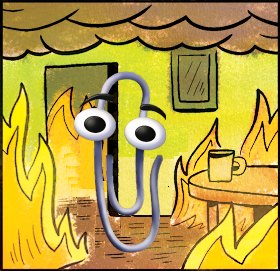This is a joke, I didn’t really lock myself out
Happened to me once. Had a little Pi at my parent’s house and that was a nice excuse to visit them.
deleted by creator
Except when you get there and don’t want to talk or do all the meeting and greeting until you know the server still works.
Real servers have lights out management and management networks.
I’d rather plug in a screen with VGA than deal with HPE iLO 4
deleted by creator
Networking noob here; what, pray tell, is HPE iLO4… or do I want to even know?
Edit: Never mind. Found it. HP… shudders
“In December 2021 Iranian researchers at Amnpardaz security firm have discovered rootkits in HPE’s iLO (Integrated Lights-Out) management modules.”
Because of course lol
To be honest, HPE iLO 6 isn’t too bad, if you’re using the GUI. It’s the API that remains really broken in many places.
I keep a Windows 2008 w Java 6 VM on ice for administering old Java console shit like that.
The VM is unsafe as hell. Completely virgin unpatched. The only protection is that I don’t give it a gateway or dns, and I shut it down when its not in use.
And it works. Old Java shit can still be used.Sounds like an issue draling with .NET or JRC console.
Are you on the nosz up to date firmware?I remember there being the option of using HTML or a Java applet, I chose the former
If you have the HTML5 option you should be on a pretty recent firmware.
Interesting that you’d prefer going (literally) analog connection rather than over the IPMI.
Doing this is a right of passage.
Believe it or not, “rite” is the, uh, right, word here.
Messing up the spelling is a wrong of passage.
I don’t belief it.
Just breath!
deaths
deaths nuths
You have a right to pass once you’ve done this rite of passage.
Believe it or not, straight to jail
even worse. I regularly have to get up out of my chair and go down 2 stairs.
Also this took a while to find, but : https://sourceforge.net/p/shorewall/svn/HEAD/tree/branches/4.2/Samples/one-interface/shorewall.conf
ADMINISABSENTMINDED=YesIs an actual setting in the config for the (now apparently unmaintained) Shorewall Firewall software/tool for linux.
If I remember correctly, it always checks on firewall rule changes if there is an active connection on port 22, and adds a special rule at the end to maintain that connection.
They don’t build them like they used to anymore.
They don’t build them like they used to anymore.
Well if we did, the way it works would be by telling a chatbot to enable ssh on port 22 at the end.
Classic.
Love Hetzner. If something like that were to happen to me they can hook up a remote console accessible through their web interface.
Many hosting providers have a remote console feature.
Don’t practically all commercial hosting providers provide remote console access?
This seems a combo of an extremely newb mistake in an extremely unusual scenario - worthy of Gru I guess.
Physical, on premises servers are still a thing.
Yes, I also used to run an “on premise” server - in my kitchen, not 500km away. I sometimes might need to admin it remotely, but never critical setup work.
And the meme makes it sound like they have to drive there specifically to fix it, like nobody is actually living nearby.I mean it’s a pretty realistic scenario. I happened to be the unlikely remote hands for the company I work for just a few weeks ago.
Company: an industrial cleaning company with about 1500 AD users and about 8000 employees, historically had 2 corporate offices, currently has three as it’s transitioning one corporate office across the country
Server and mistake in question: old admin who’s no longer with the company setup the ESXI 6.0 cluster in the server room at the office without documenting the root password to access it. This cluster happens to host the companies critical services including AD so being unable to access the host has been blocking the office migration. Old admin had also not fixed the ESXI backups which have been broken for over 3 years so no backups to restore from. Also the out of band access to the servers was never correctly setup
I happening to be close to this office and having IT experience was poked to go in and with physical access to modify the shadow file and set the root password to be blank. Had I not been available they would have had to fly someone in from the office 2000 miles away or hire a very expensive local contractor to come in after hours to do the same thing
Well, I have my server running in my parents basement, because they have fiber, and I don’t.
It’s not quite a 500km drive, but still a long enough distance for this scenario to be a major inconvenience.
But since I have wireguard running on their router though this specific scenario is not something that could happen to me
Wireguard is a VPN protocol, so you are able to tunnel into their router to…do what exactly?
It let’s me remote into their LAN, thus bypassing the firewall
Please forgive the ignorance here. What are you trying to do? I thought you were trying to reboot an offline server. I’m probably just confused!
Well, the original post (as in the image) is about locking yourself out of a remote server by changing a firewall rule, thus needing to drive to the server to access it locally.
By using wireguard to tunnel into the router, you can remotely enter the LAN, thus bypassing the firewall, as if you were accessing the server locally.
They should have a remote console like Dell RAC or HP iLO
Could be they were configuring the actual network firewall and got a couple of rules out of order so they blocked all of their out of band access
Yeah, all the ones I’ve used had remote access
Since that happens to the best of us, I envision writing a wrapper script around {n,}pfctl that asks for confirmation upon detecting that you’re logged in via ssh through a specific port AND detecting that the new rules would block that port.
VMware does this with its virtual networking. If a change takes it offline, it automatically rolls it back. It can be frustrating at times, but mostly its saved my ass.
Meraki does this as well. If you change anything that might disconnect the uplink or the port you are connected to, it gives you a pop-up warning before it commits.
What’s really fun is hearing “oh shit” from the UPS maintenance tech followed by darkness and silence.
That the slrpnk.net admins in the picture?
They had a hardware failure but close enough
Would misusing the
ddcommand be considered a hardware failure?Yes. Everything is a hardware failure because where does the software run? That’s right, on hardware. So software bug = hardware failure.
Yup, that’s a bug in the chair-keyboard interface.
I’ll always be grateful for the firewalls like OpenWRT that will automatically revert any changes if you don’t log back in after a few minutes (at least on the web interface). I’m not proud of how many times that’s saved me.
Almost the same thing happened to me. I accidentally fucked up the internet connection in my home while in Japan, and I had to video call my mom to have her fix it. It was a pain for both of us, but thankfully it went rather smoothly. Thank you mom!
Do you mind explaining the details? I’m trying to learn as much as possible!
Most corporate network devices like Cisco will reset their config to the one written in memory when they lose power.
So in that case, just unplug and replug them to restore to previous config.
Just make sure you write your new config to memory or it will reset when there is ever a power failure.
So I connected through ssh back home to fiddle with the router settings, and in the PPPoE settings (where you set a pair of username and password that your router sends to the ISP such that the ISP knows you and knows what IP to assign to you) I made a typo, and apparently that instantly killed the internet connection at home and also for me. I had to call my mom to instruct her to fix the typo in the username. TBH I don’t know that much about PPPoE either, I only do it so that the ISP assigns us the same IP address every time.
I try to remember to always open two SSH connections when altering iptables or the ssh config - just in case
Before you make a change, do this in a screen-session:
sleep 300 && iptables-restore old_fw_rules.bak
permission denied
fuuuu
Found the debian user.
user permissions is a debian thing now?
A long time ago, Debian 8 or so it was a bug with Debian. Something about the command running without root despite the sudo command.
Yeah except it would be iptables-restore < old_fw_rules.bak
Fun fact: When you do iptables-save, you have to redirect the output if you want to save it to a file. But when you use iptables-restore, you don’t need to pipe it back in, you can just use the filename!
It wasn’t always that way. At one time you had to so I still do.
Totally! I still catch myself doing that sometimes. Old habits die hard
Does it actually happen to people? All servers I worked with both had a back door (or two), and someone at the data centre (during work hours at least) you could contact in an emergency.
I guess some smaller companies might have simpler setups they self-host
Most data centers have some kind of service where you can request a KVM to be connected to the server. It’s not instant as an actual human has to do so but a lot sooner than another human driving long distance. I guess in this case, it’s a mid size company that is big enough to have multiple locations yet small enough to still manage to use on-premise infra instead of data centers.

iptables default DENY and flush the rules. Dome by at least two people I know (then me) at the same company. Led to them moving the servers in-house and virtualizing some services to connect to the hypervisor. It does happen though.
this sounds like something chip from sales would do
It’s gray on the bottom.
Hello Derek you fucking idiot



















